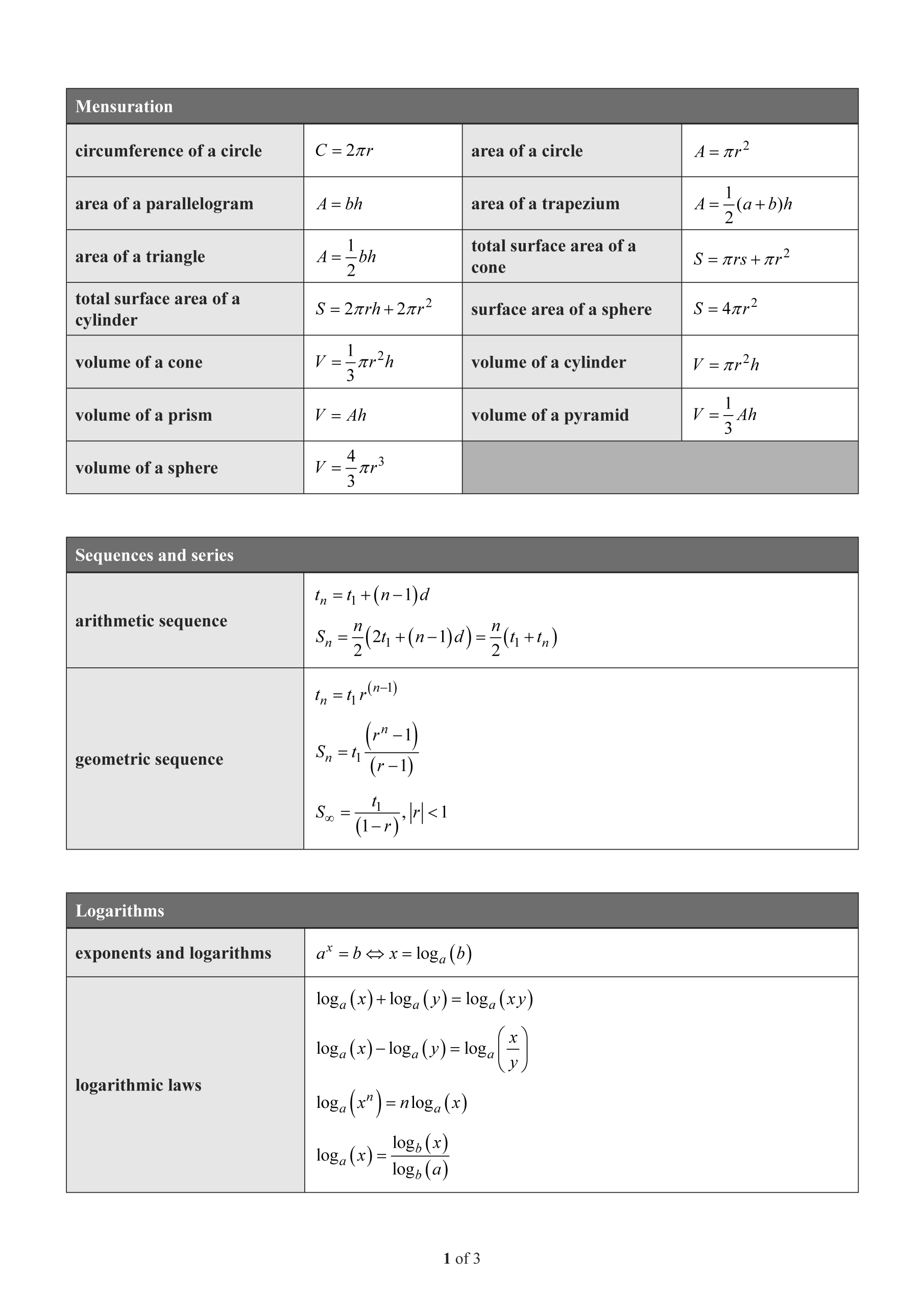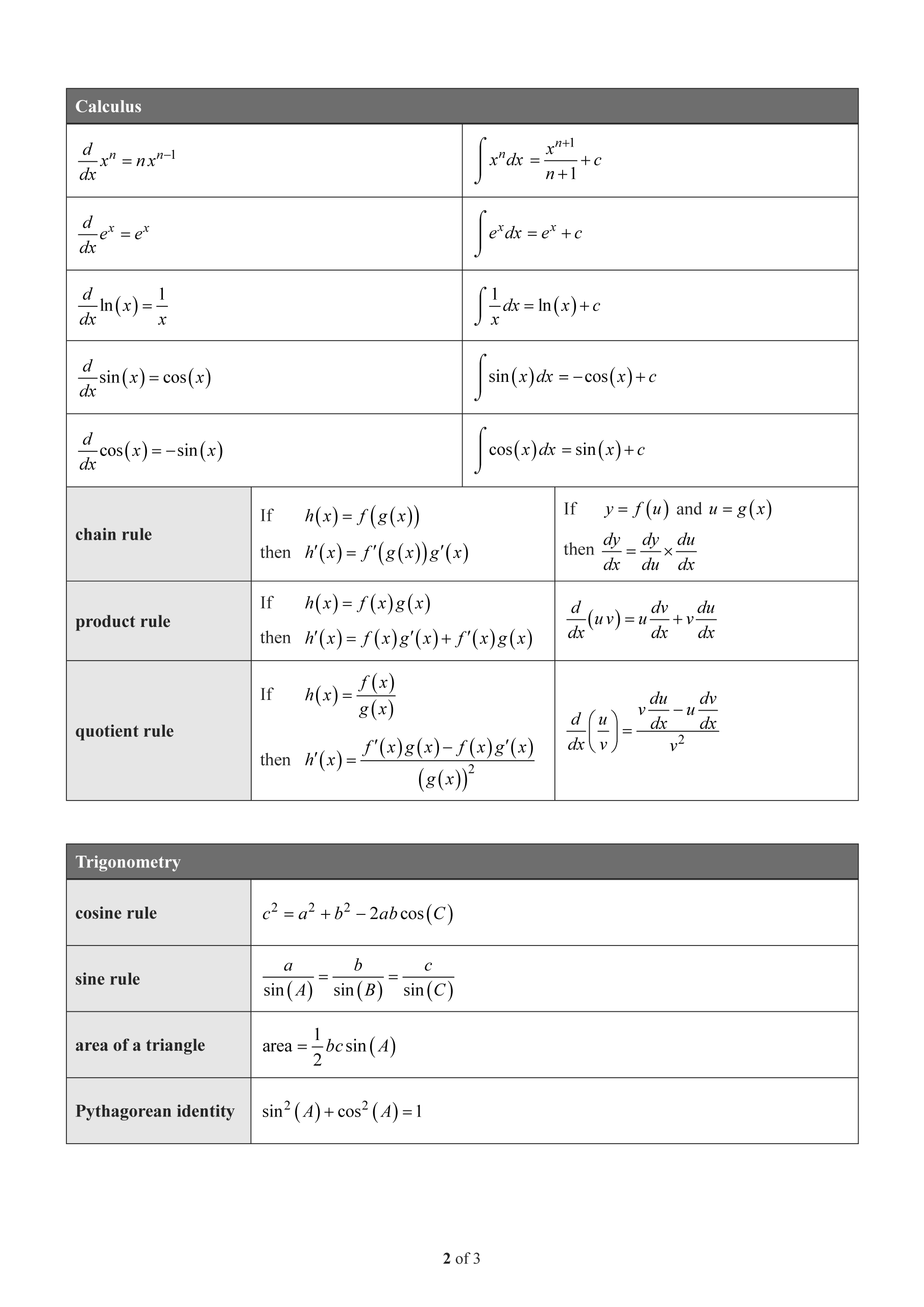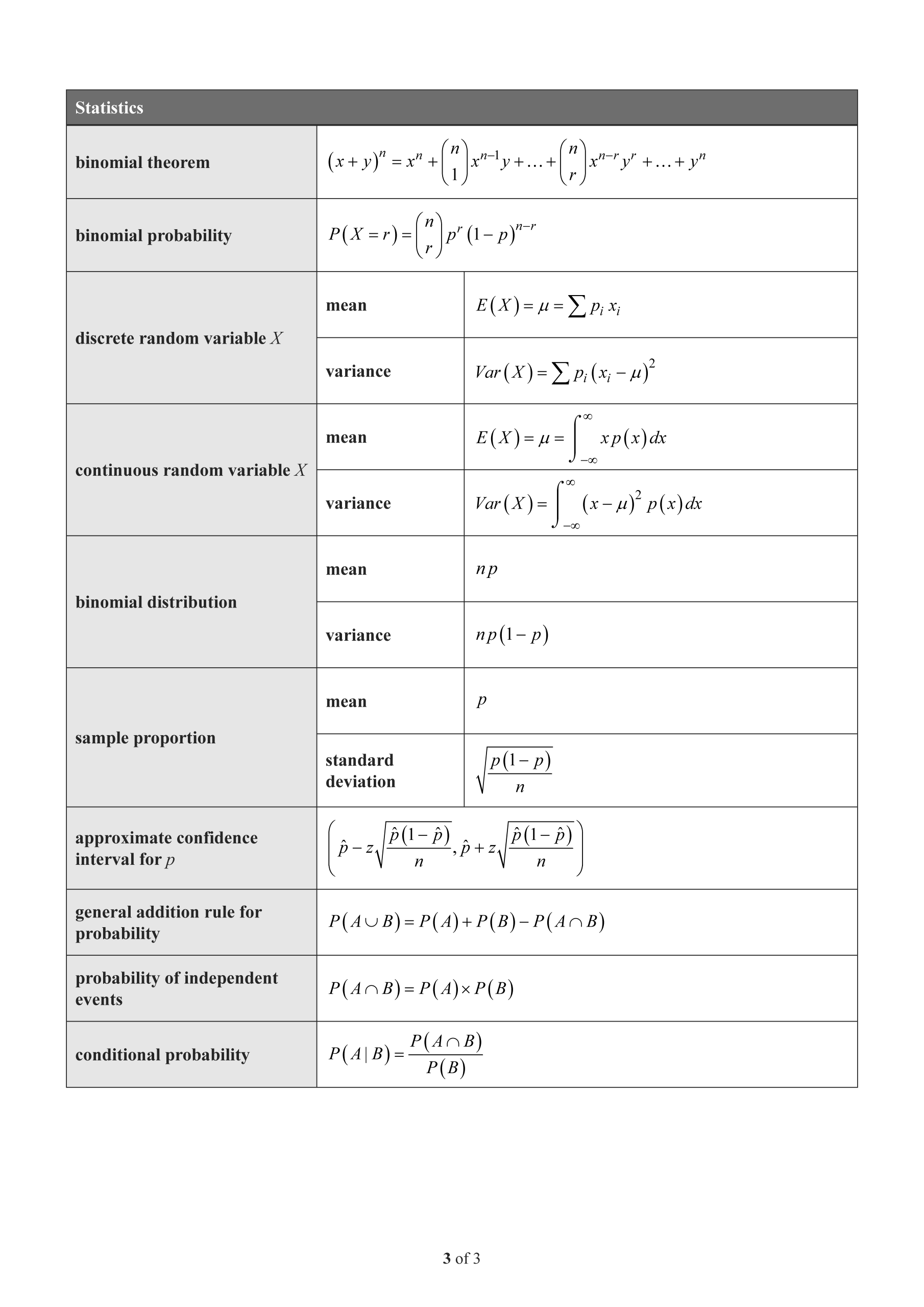2021 QCE Maths Methods Paper 1 Mini Test 6
External Assessment Paper 1 — Technology-free
Number of marks: 9
Perusal time: 1 minute
Writing time: 15 minutes
Section 1
Instructions
• This section has 10 questions and is worth 10 marks.
• Use a 2B pencil to fill in the A, B, C or D answer bubble completely.
• Choose the best answer for Questions 1 10.
• If you change your mind or make a mistake, use an eraser to remove your response and fill in the new answer bubble completely.
The graph of \(f''(x)\) is shown.
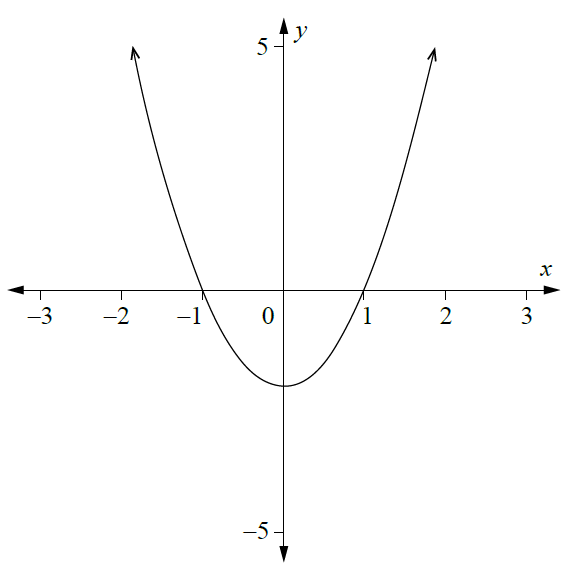
Which of the following could be the graph of \(f'(x)\)?
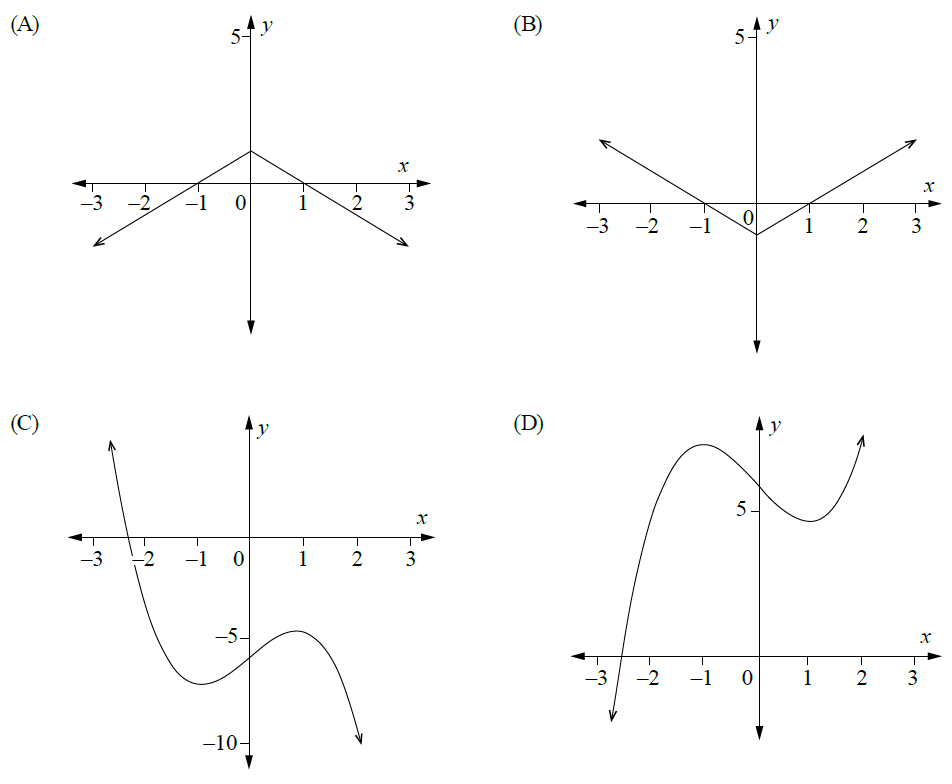
A random variable \(X\) is the number of successes in a Bernoulli experiment with \(n\) trials, each with a probability of success \(p\) and a probability of failure \(q\). The probability distribution table of \(X\) is shown.
| \(k\) | \(P(X=k)\) |
|---|---|
| 0 | \(\frac{1}{81}\) |
| 1 | \(\frac{8}{81}\) |
| 2 | \(\frac{24}{81}\) |
| 3 | \(\frac{32}{81}\) |
| 4 | \(\frac{16}{81}\) |
Which values of \(n\), \(p\) and \(q\) will generate this probability distribution?
- (A) \(n=4, p=\frac{2}{3}, q=\frac{1}{3}\)
- (B) \(n=4, p=\frac{1}{3}, q=\frac{2}{3}\)
- (C) \(n=5, p=\frac{2}{3}, q=\frac{1}{3}\)
- (D) \(n=5, p=\frac{1}{3}, q=\frac{2}{3}\)
Determine \(\int_{1}^{3} (2x+3)dx\)
- (A) 2
- (B) 4
- (C) 14
- (D) 16
The continuous random variable \(X\) has the probability density function
\[ f(x) = \begin{cases} \frac{3}{x^2}, & 1 \le x \le \frac{3}{2} \\ 0, & \text{otherwise} \end{cases} \]The mean of \(X\) is
- (A) \(\ln\left(\frac{3}{2}\right)\)
- (B) \(\ln\left(\frac{27}{8}\right)\)
- (C) \(\ln\left(\frac{9}{2}\right)\)
- (D) 1
A basket contains 10 green apples and 30 red apples. Three apples are drawn at random from the basket with replacement. Determine the probability that exactly two of the three apples are green.
- (A) \(\frac{3}{64}\)
- (B) \(\frac{9}{64}\)
- (C) \(\frac{10}{64}\)
- (D) \(\frac{27}{64}\)
Handspans of teenagers are approximately normally distributed, with a mean of 15 cm and a standard deviation of 2 cm.
Which of the following groups is expected to be the largest?
- (A) teenagers with handspans that are between 7 cm and 11 cm
- (B) teenagers with handspans that are between 11 cm and 15 cm
- (C) teenagers with handspans that are between 13 cm and 17 cm
- (D) teenagers with handspans that are between 17 cm and 21 cm
Section 2
Instructions
• Write using black or blue pen.
• Questions worth more than one mark require mathematical reasoning and/or working to be shown to support answers.
• If you need more space for a response, use the additional pages at the back of this book.
– On the additional pages, write the question number you are responding to.
– Cancel any incorrect response by ruling a single diagonal line through your work.
– Write the page number of your alternative/additional response, i.e. See page …
– If you do not do this, your original response will be marked.
• This section has nine questions and is worth 45 marks.
In any five-day working week Leonardo either catches a bus to work or uses another form of transportation. On average, he catches the bus to work on three of the five days. His decision on any given day is independent of his decision on any other day.
Determine the probability that Leonardo catches a bus to work on exactly one day in a given five-day working week.
END OF PAPER
